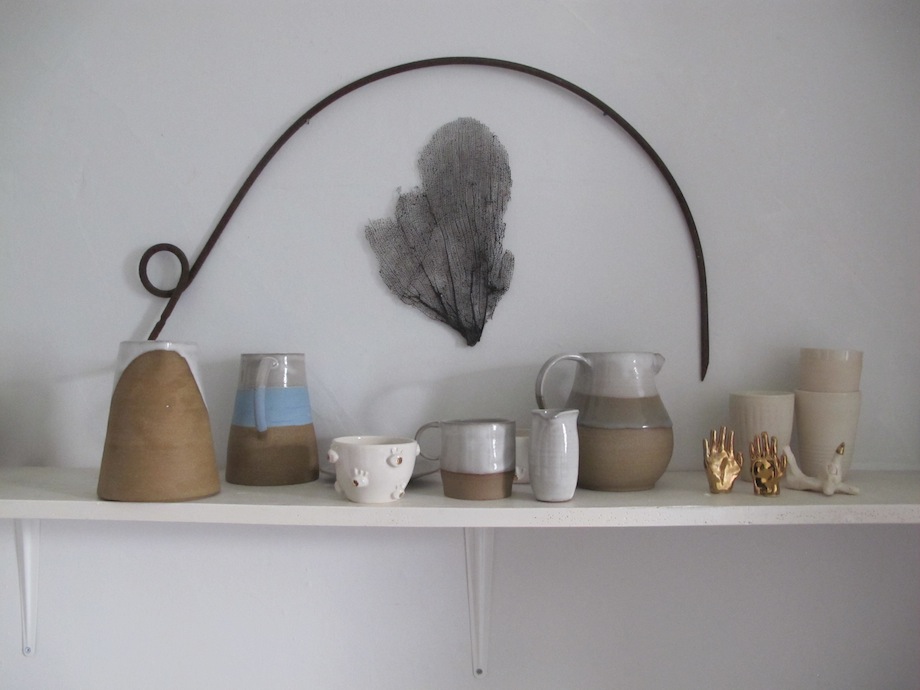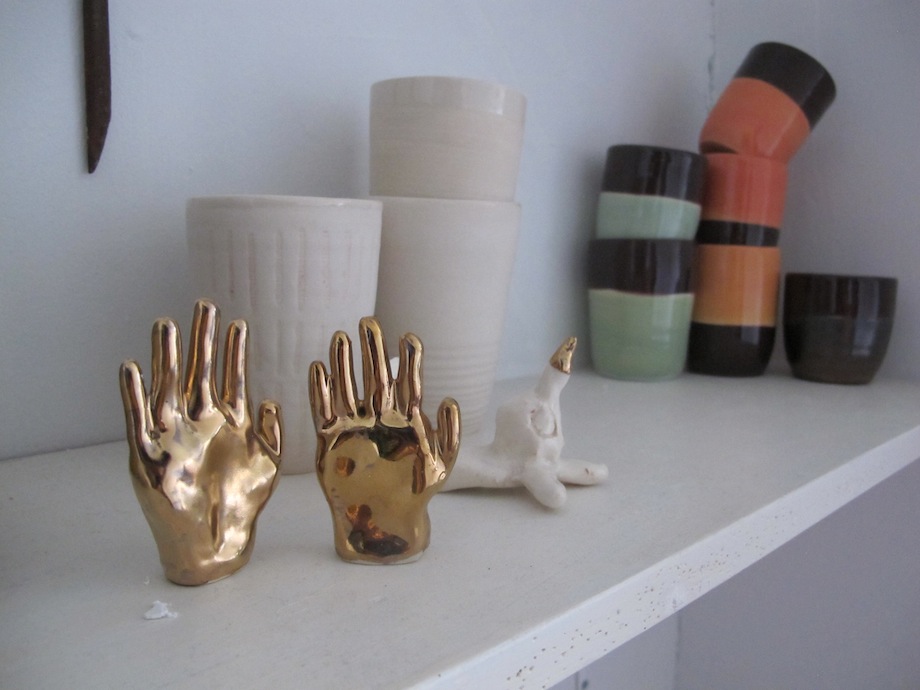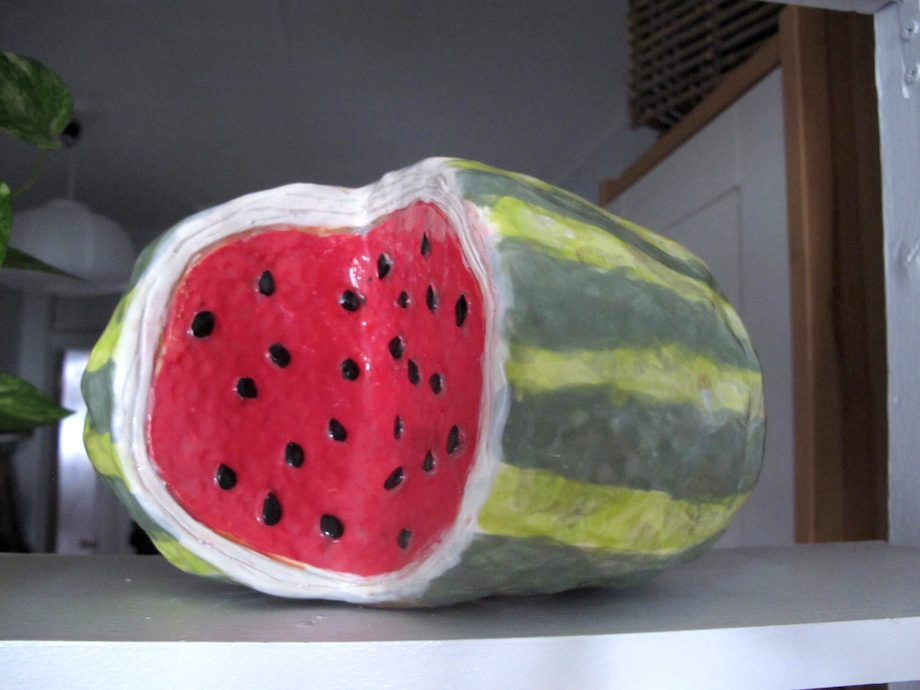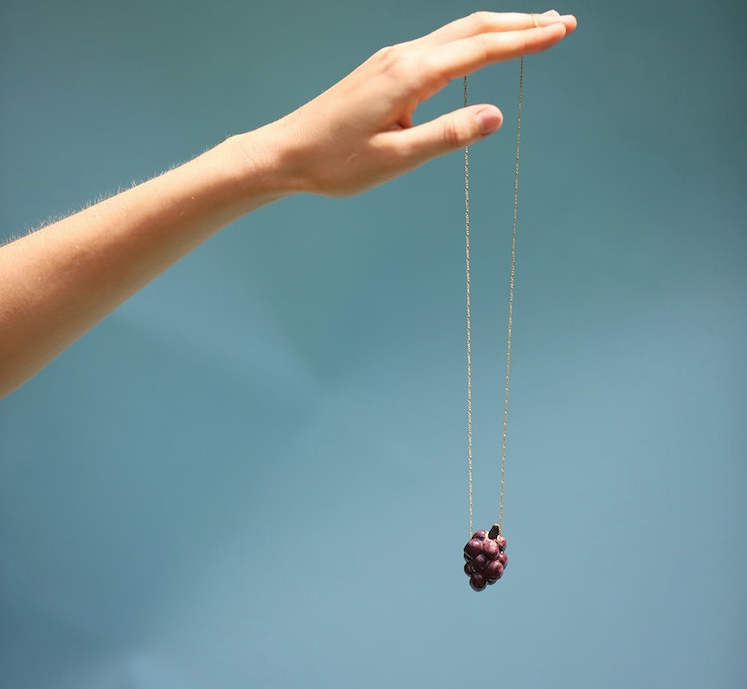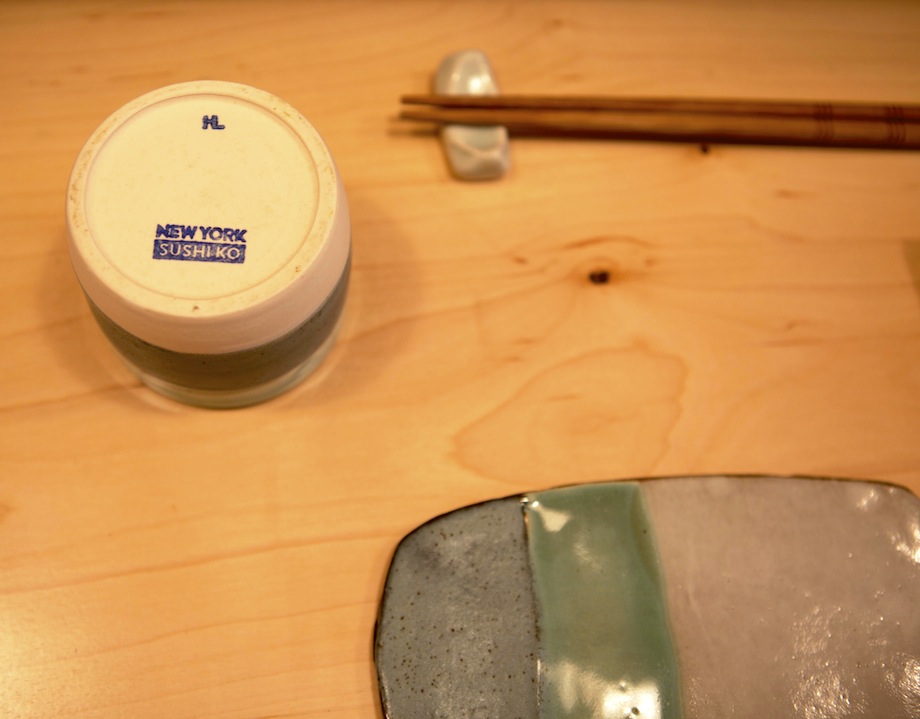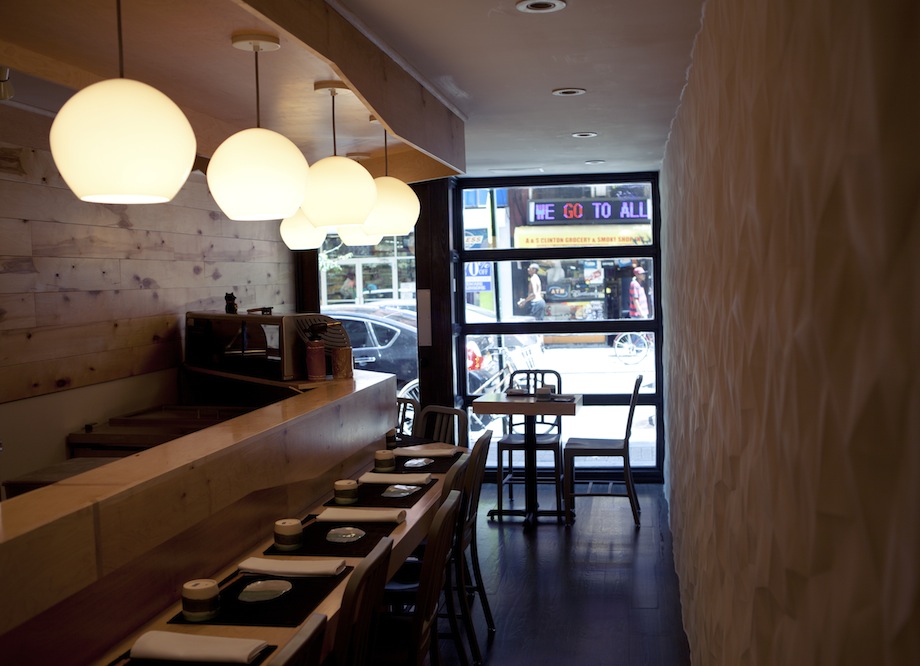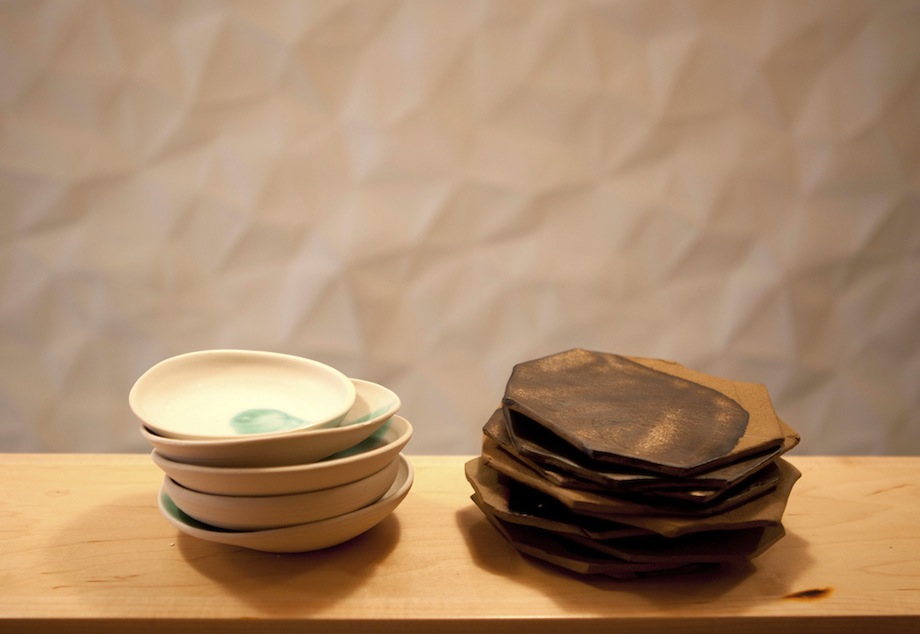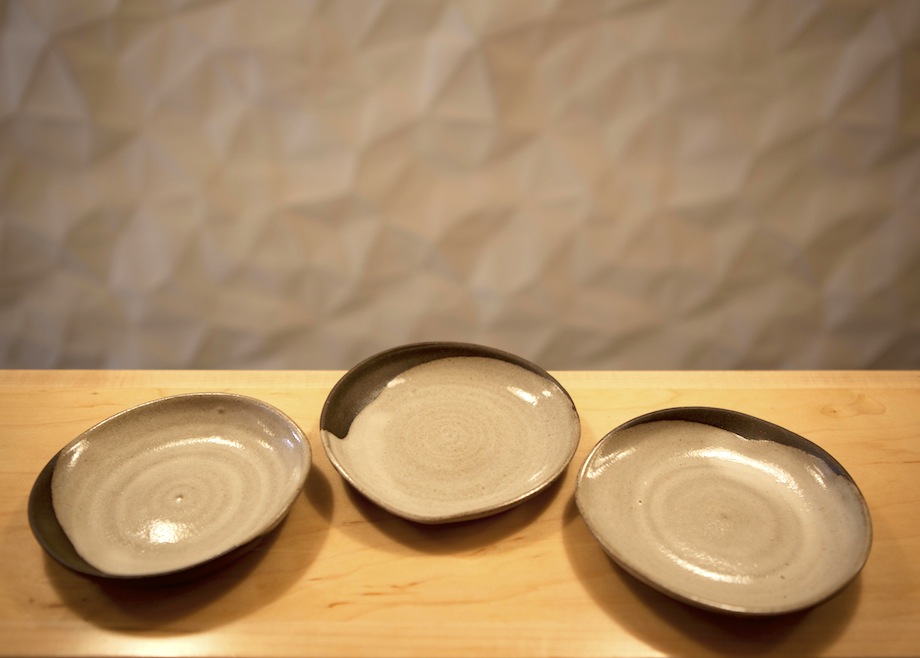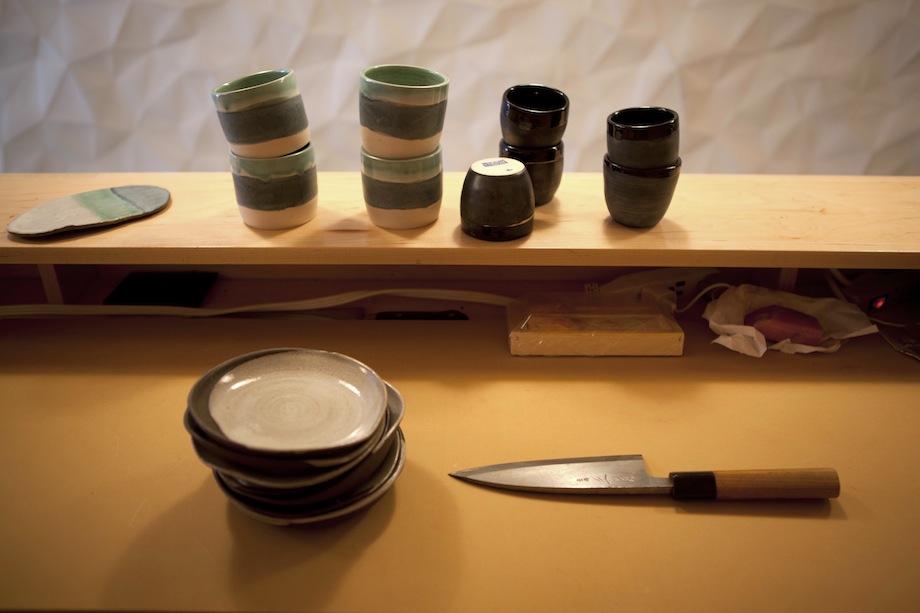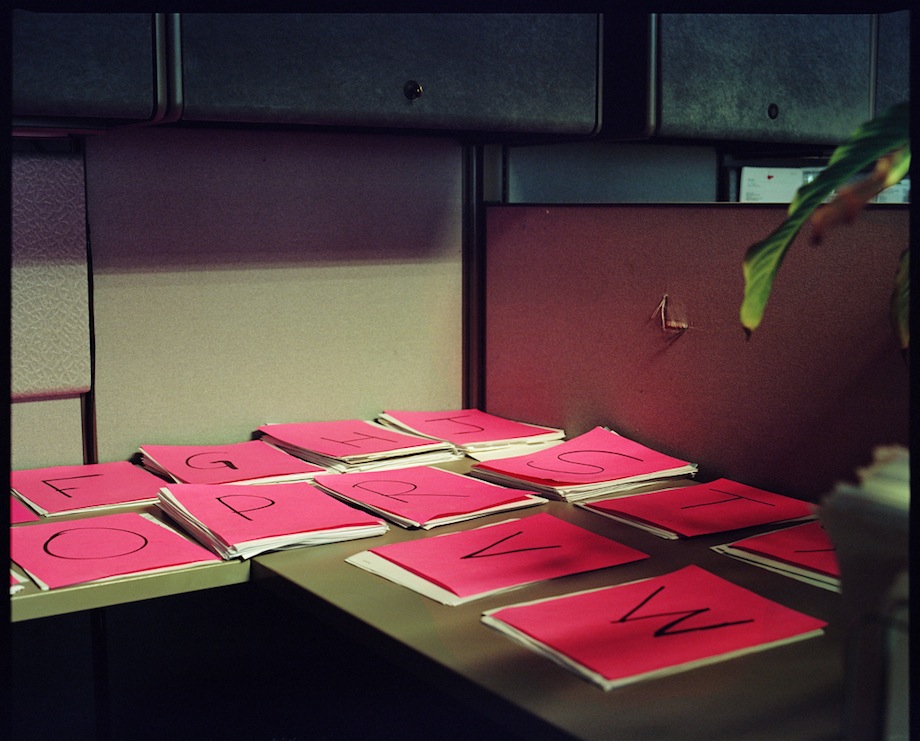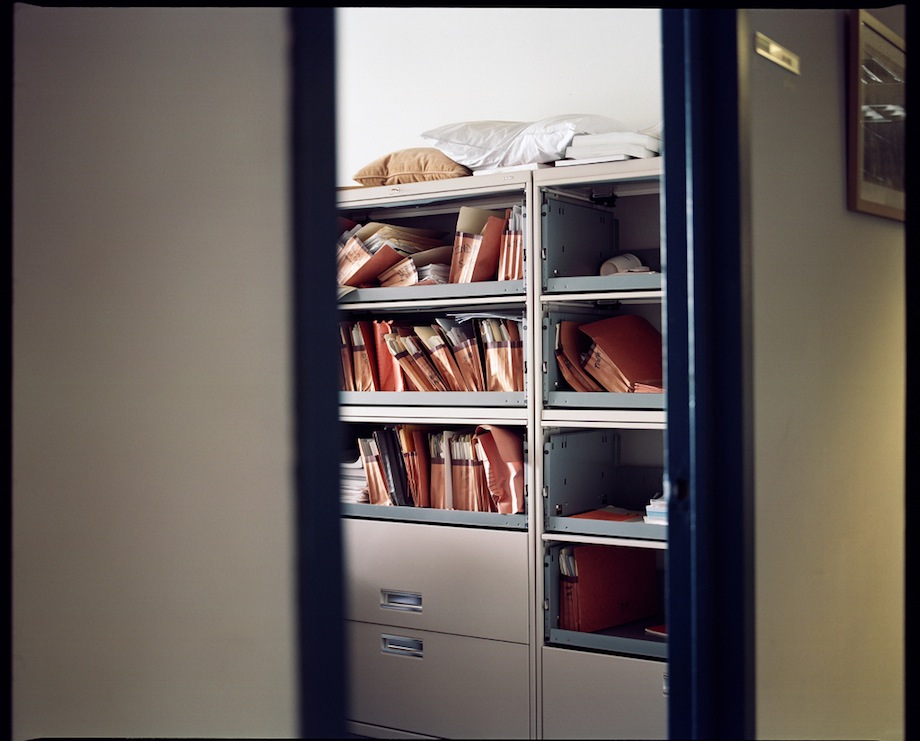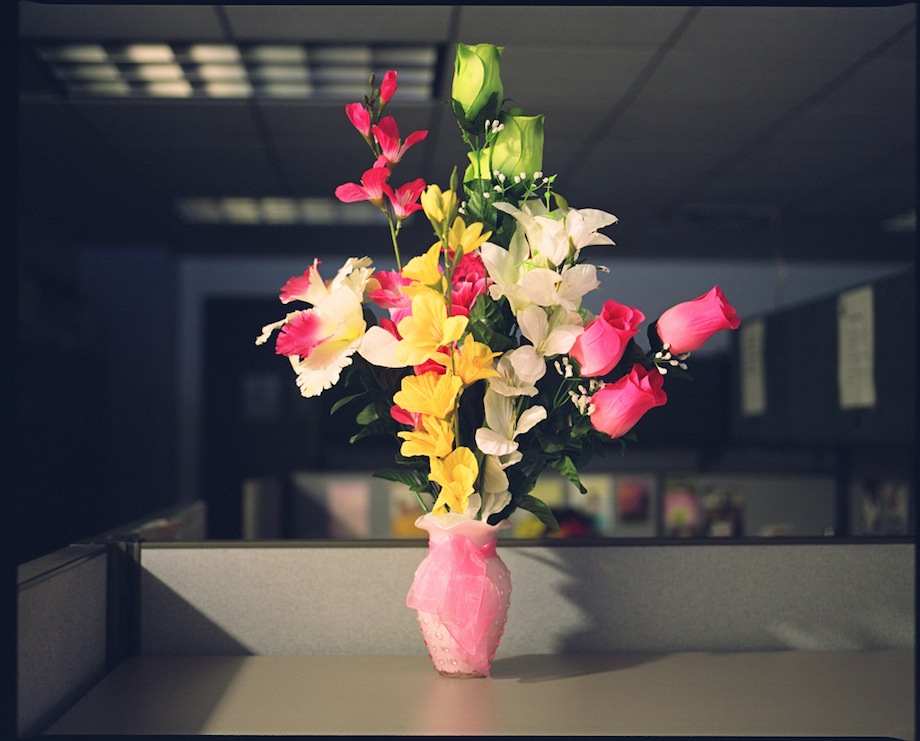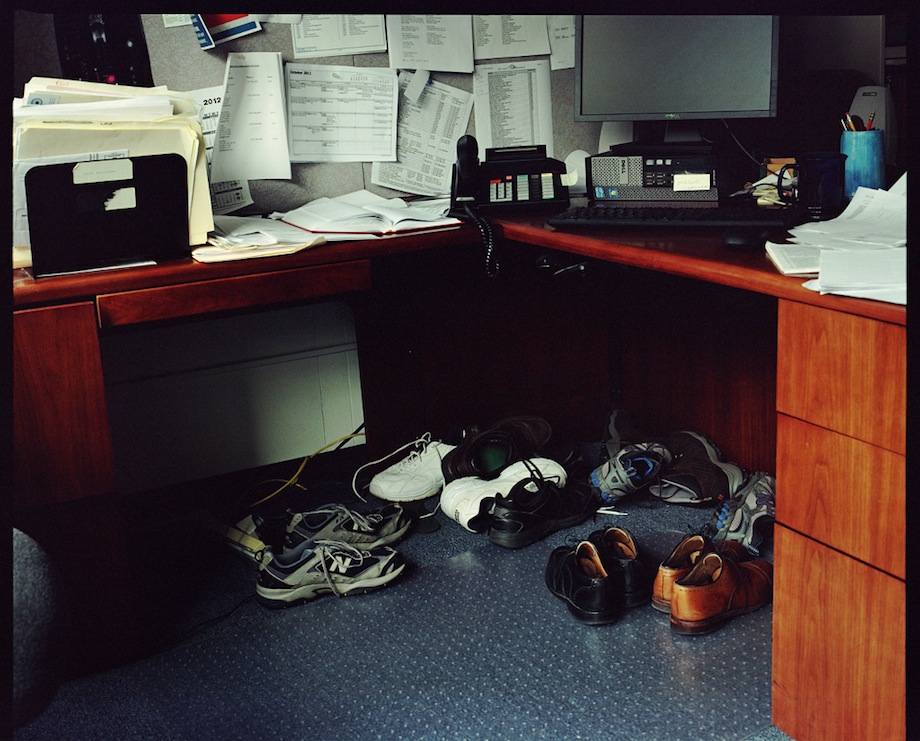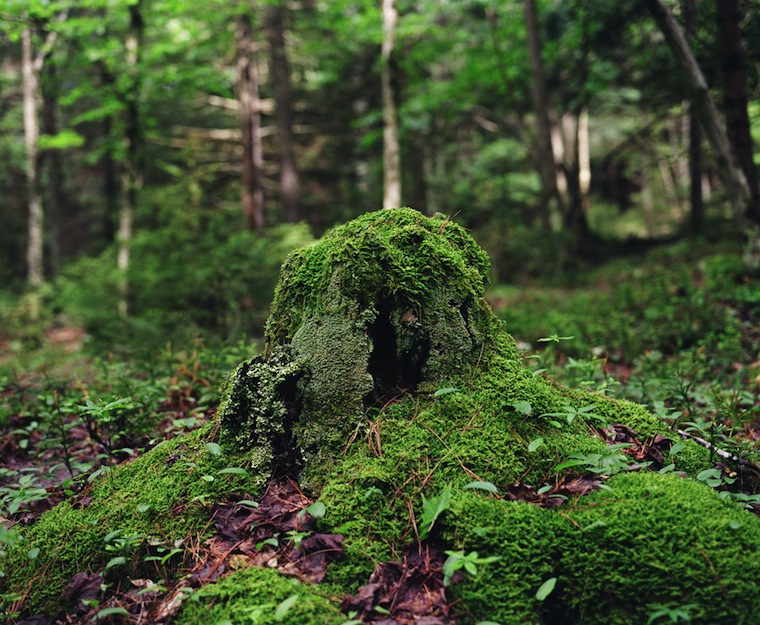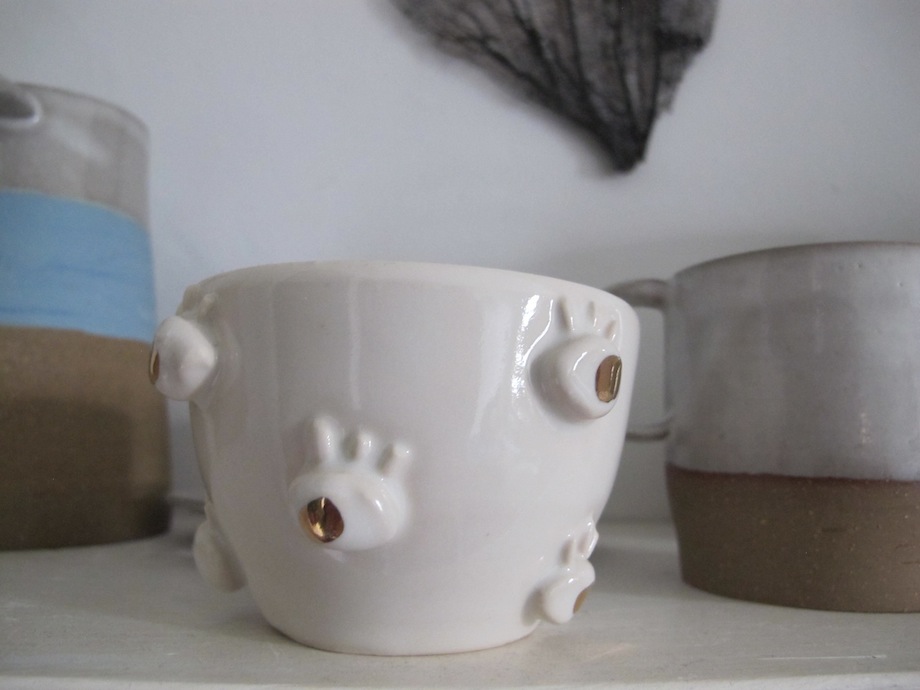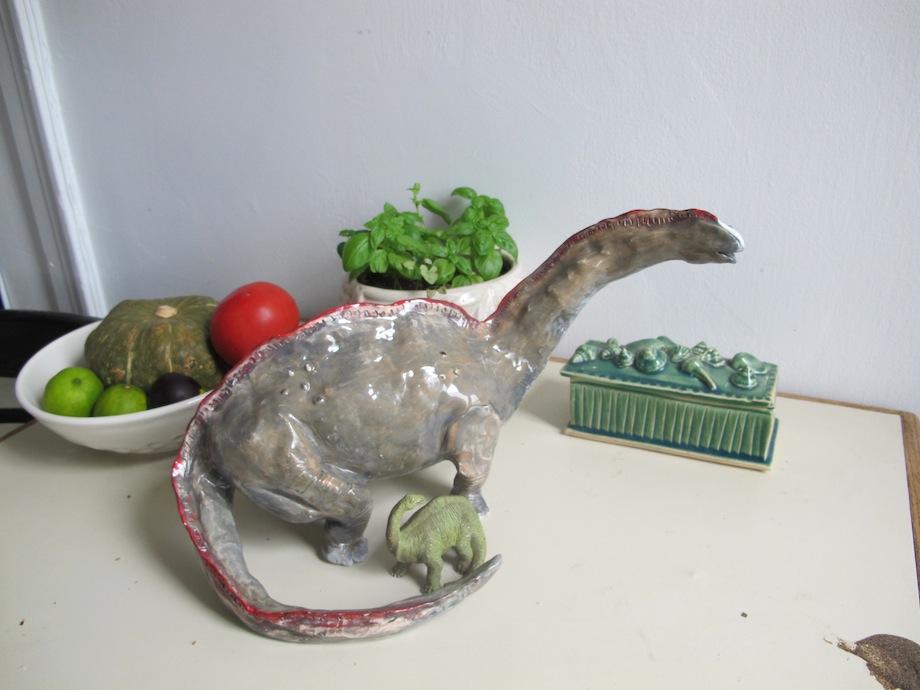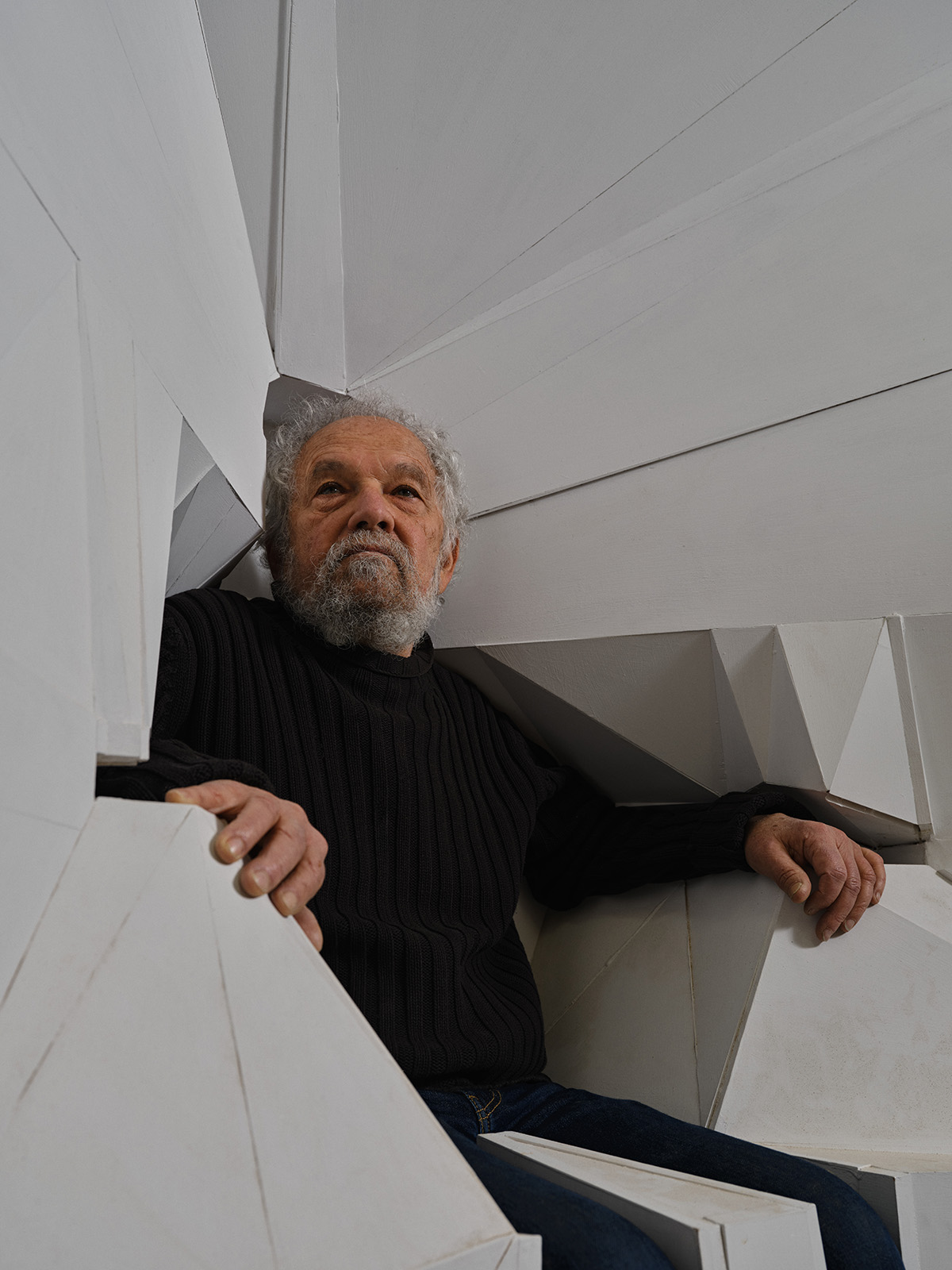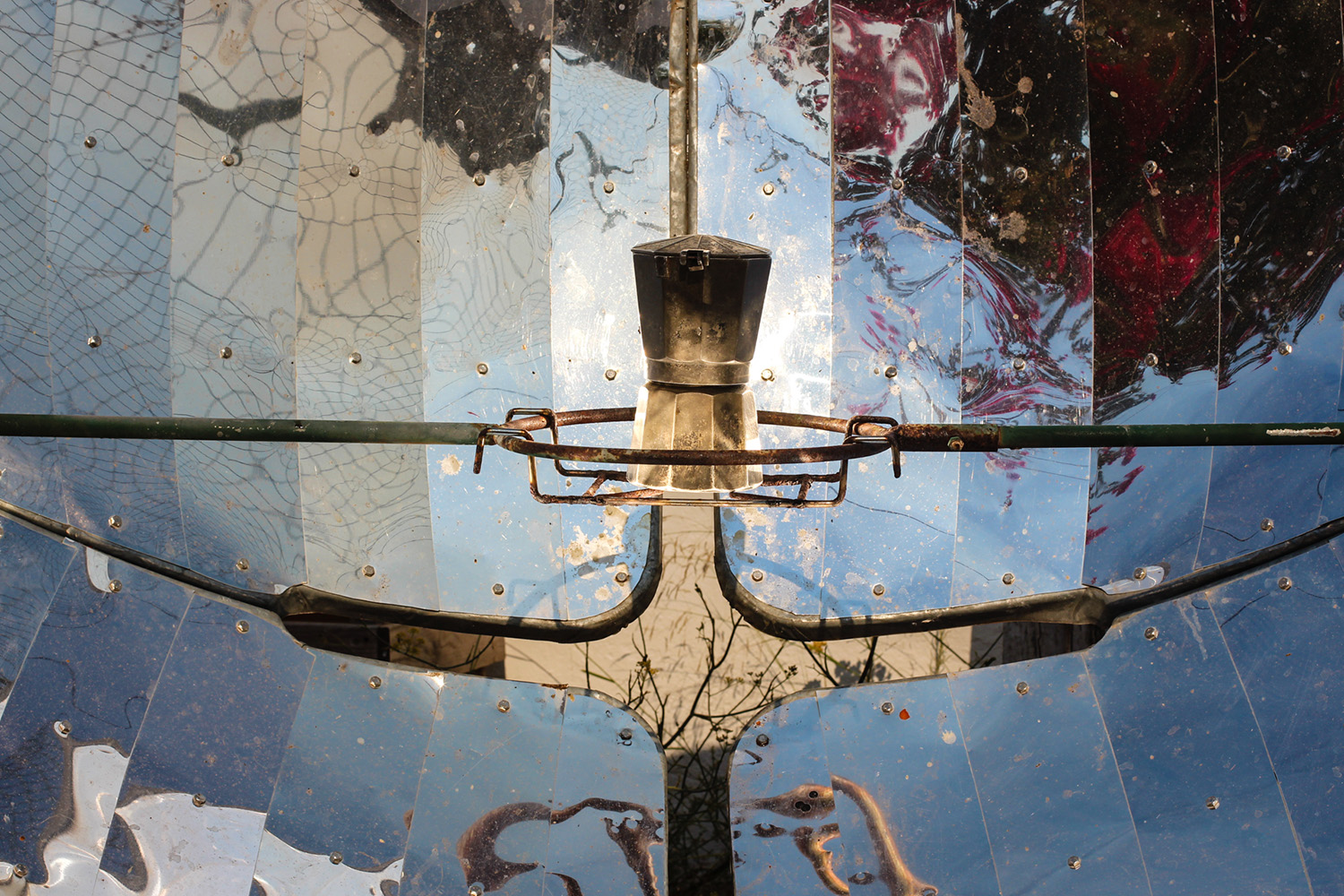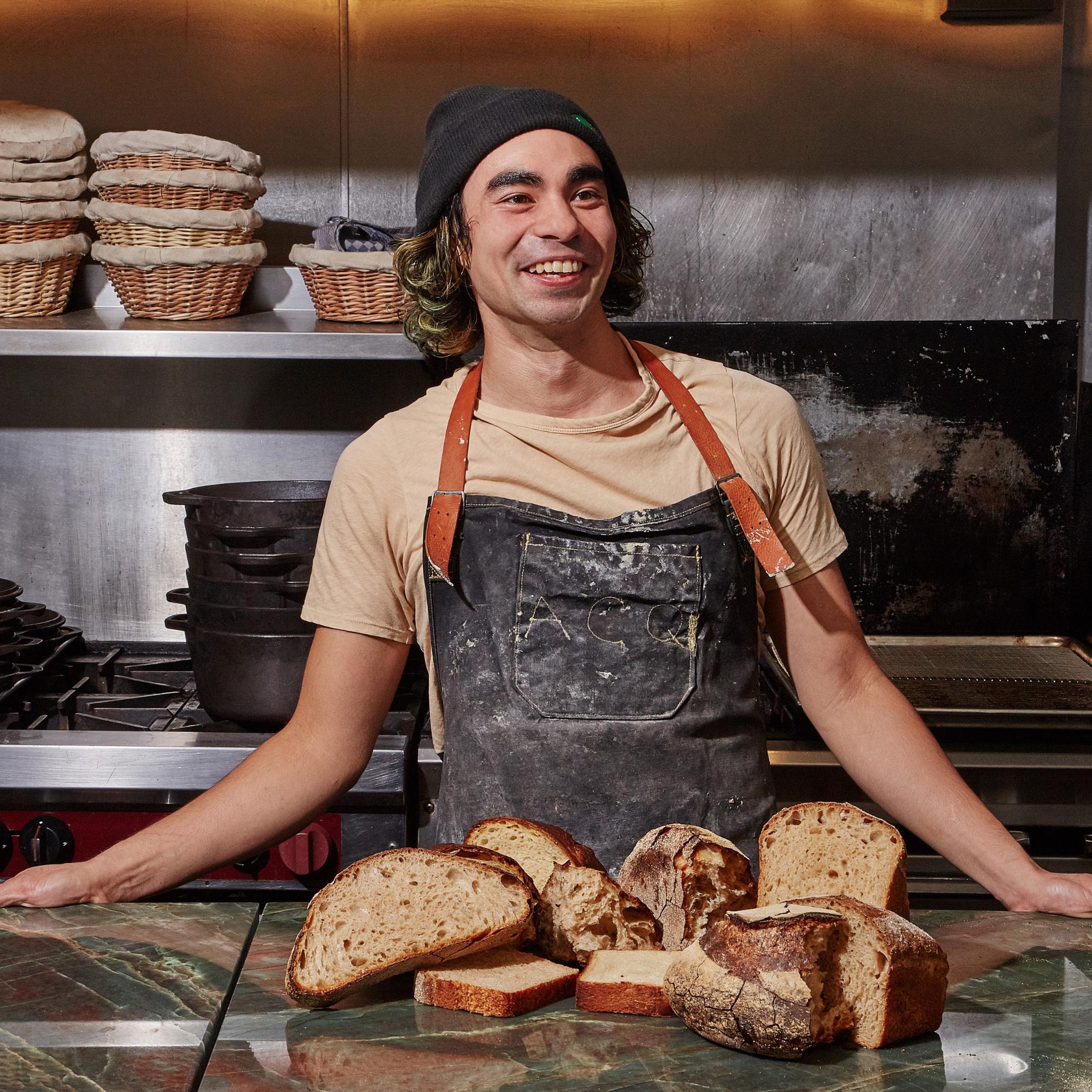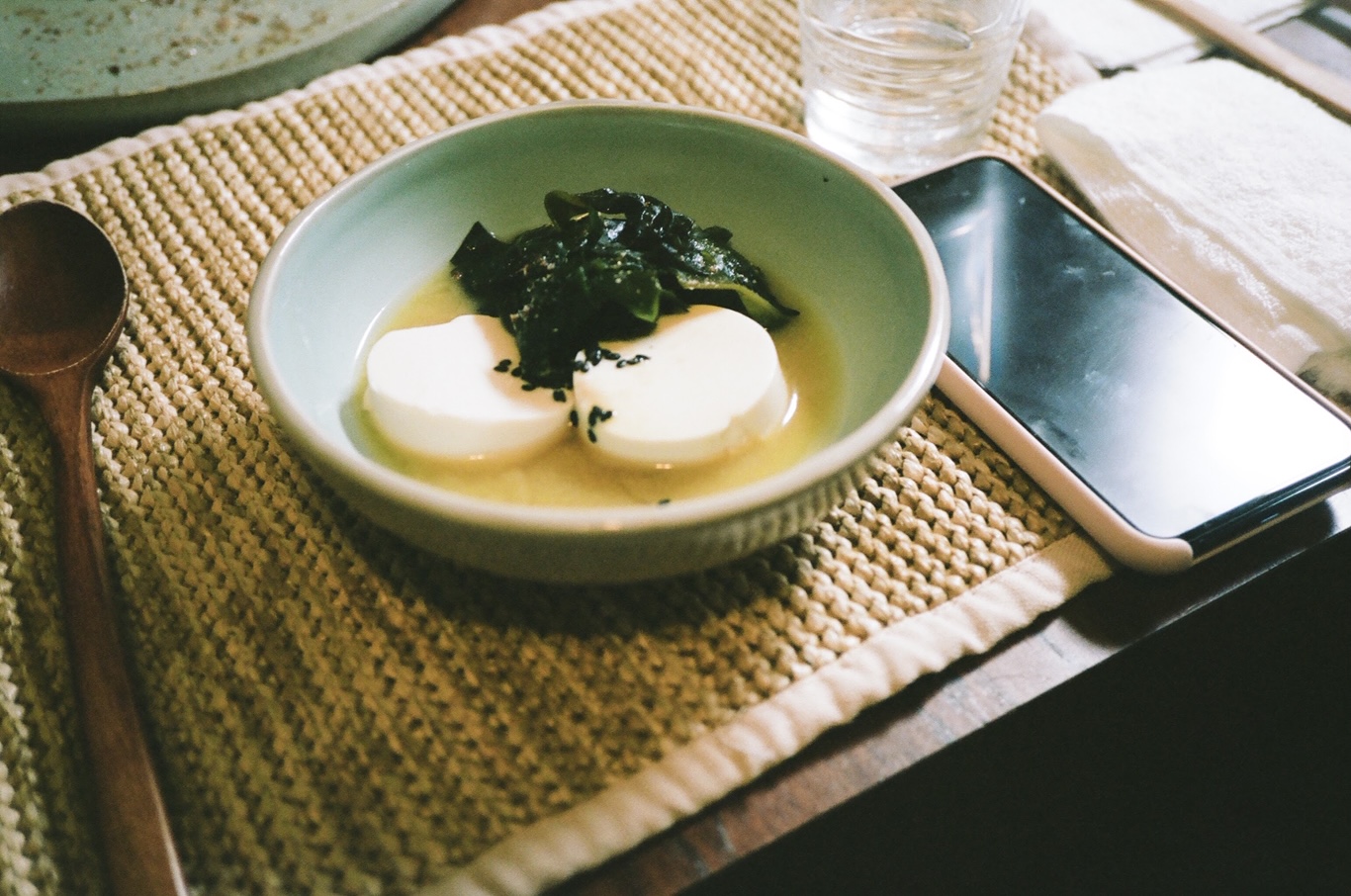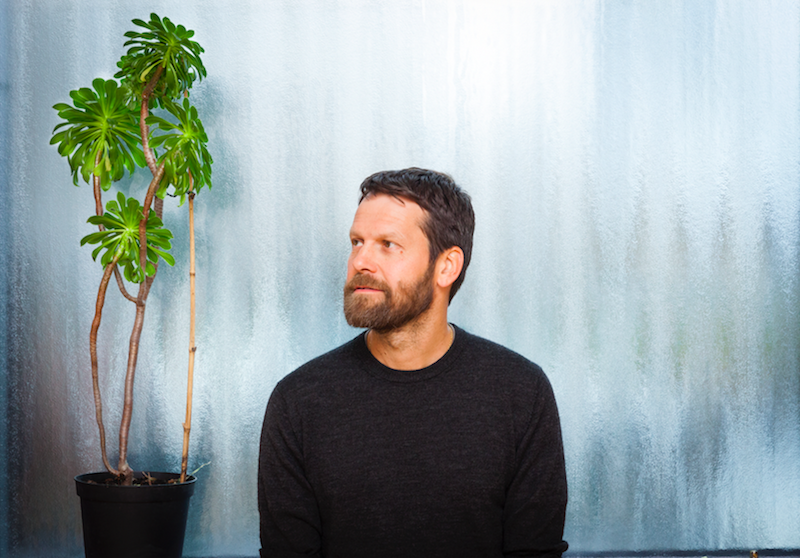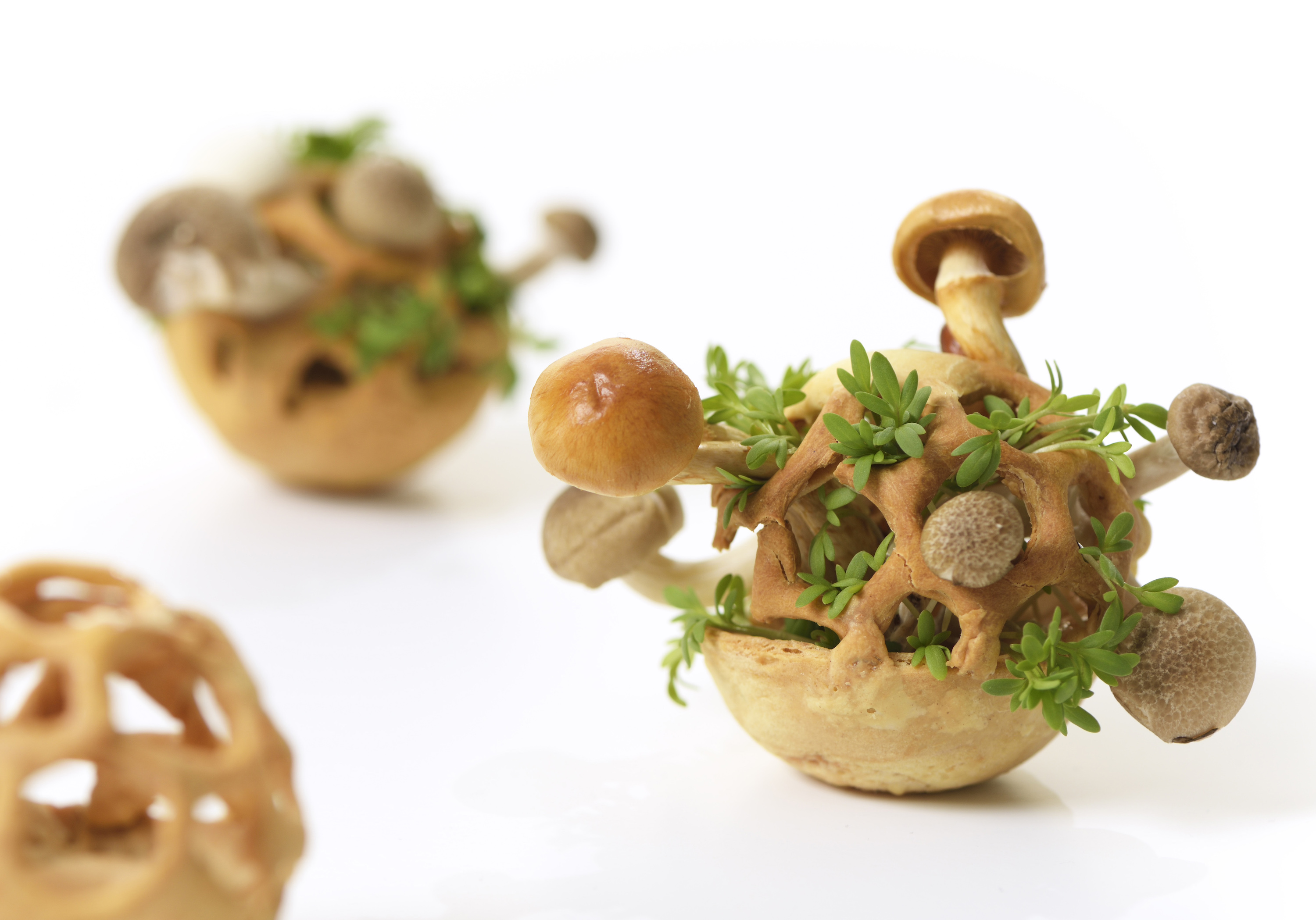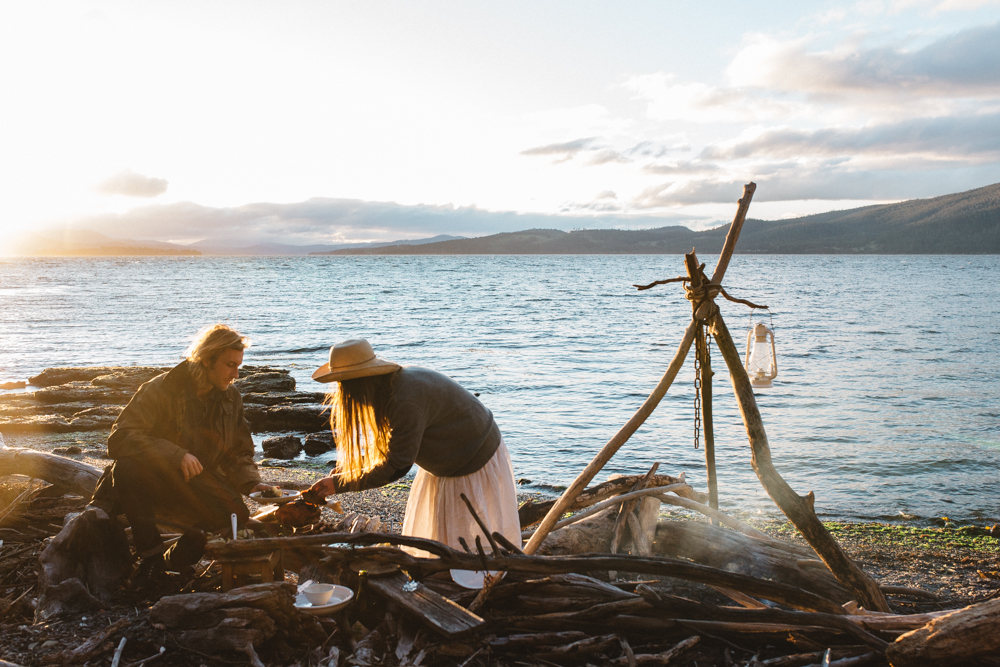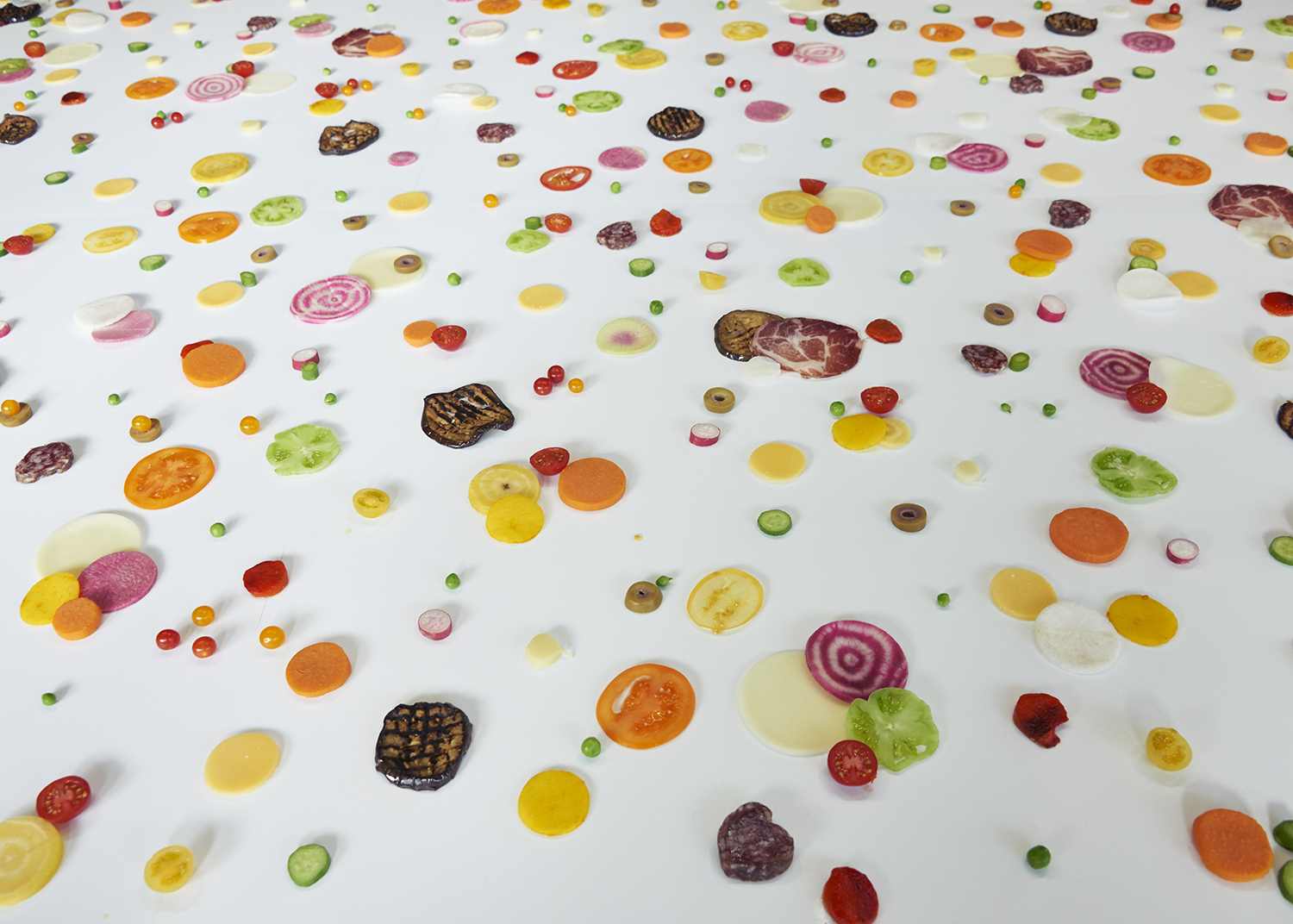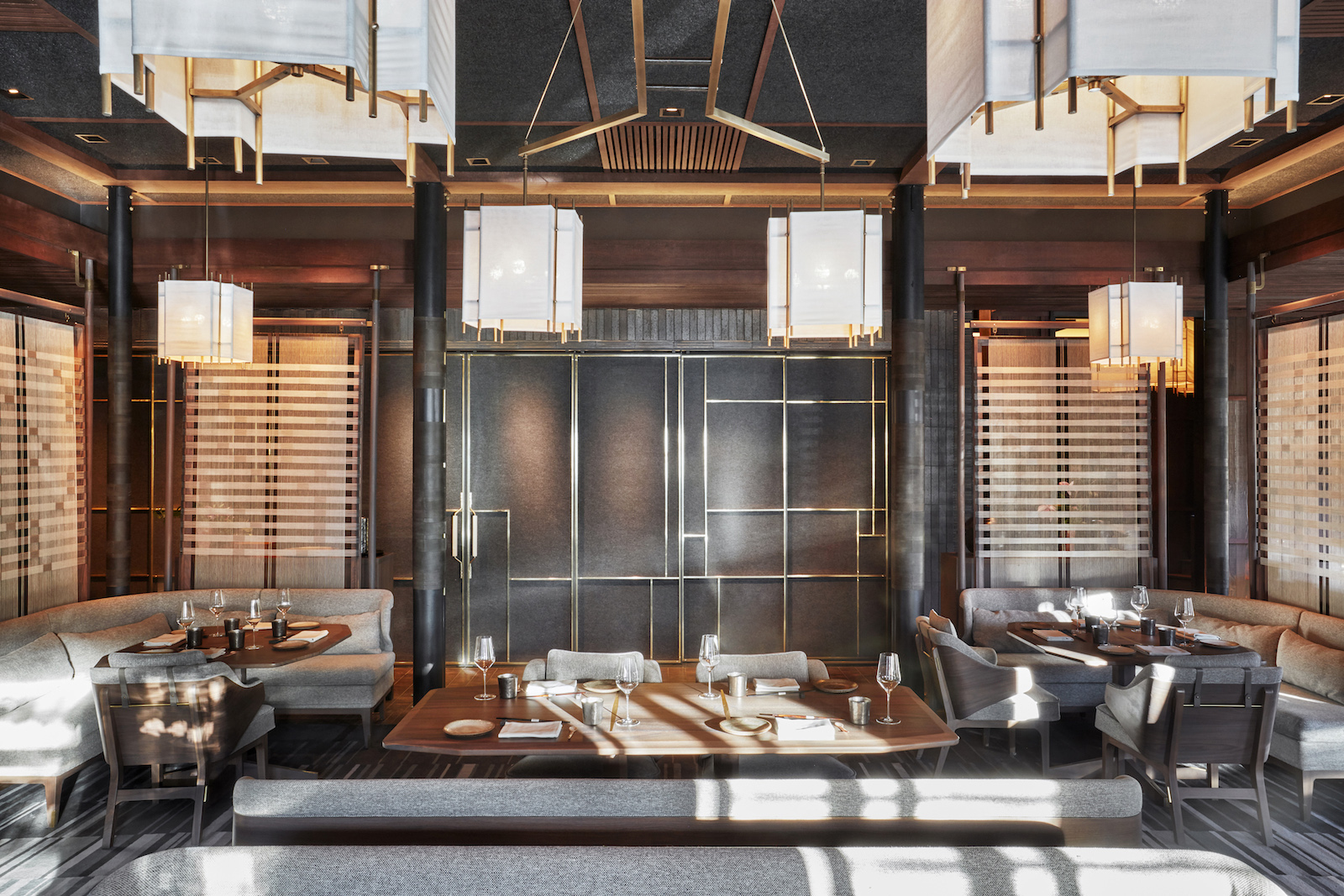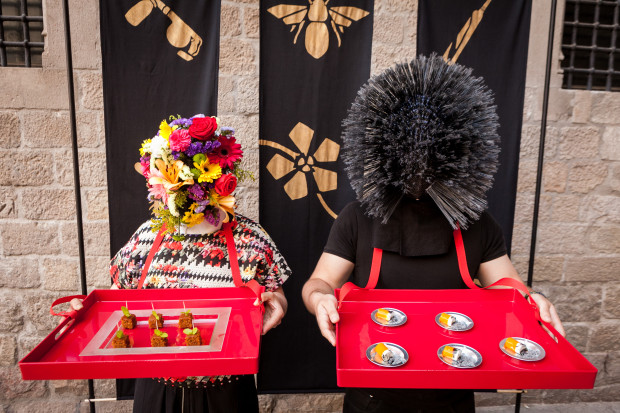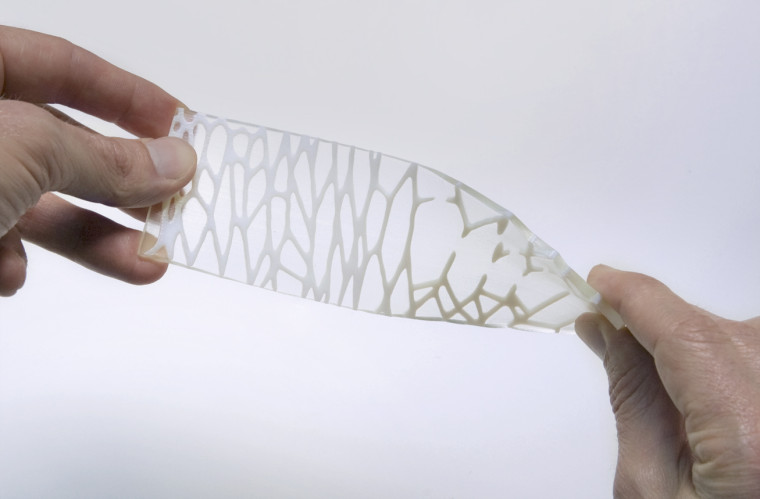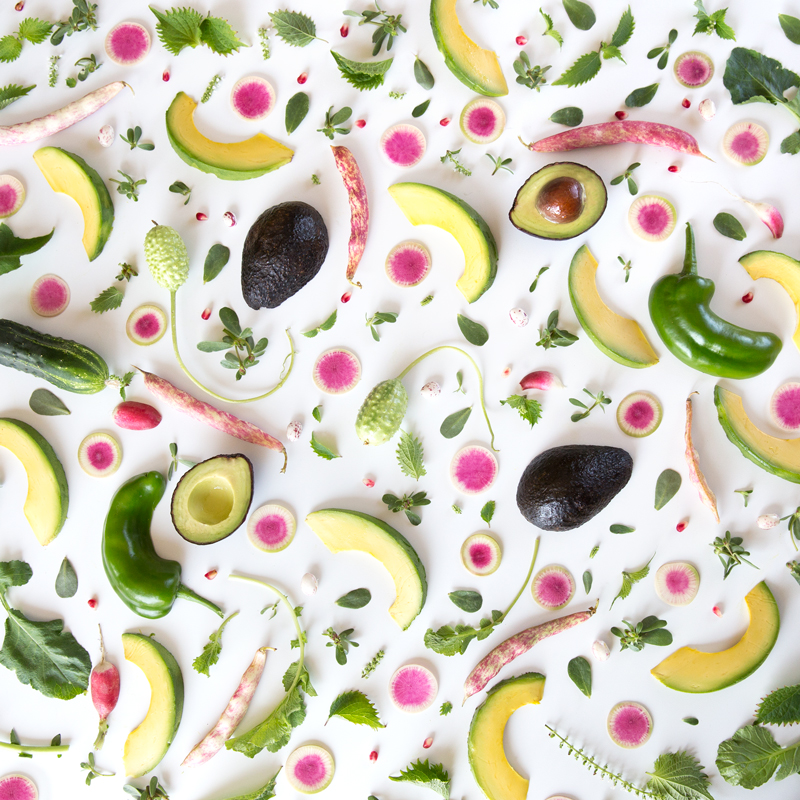Golden eyes stare unblinkingly across the sunny kitchen of Helen Levi. The warm home of the ceramicist, photographer and New York City native brims with her creative output—the myriad vignettes of ceramic fruits, light-filled photography and tableware fill Levi’s apartment. The gold luster eyes of her Gilded Eye Planter have become a touchstone of the ceramicist’s visual style—they are playful and refined. One can see the hand of the artist but still appreciate the technical precision of the craft.
A ceramic brontosaurus swivels its neck, standing guard over a planter of basil on the kitchen table. The cupboards heave with cups, bowls and plates of various shapes and sizes. Some are vintage finds, some are Levi’s creations. A grouping of her newly developed ceramic fruit pendants are displayed in their imperfect glory inside a miniature fruit bowl.
Levi is transitioning into a larger studio space and in lieu of a studio visit, she graciously invited MOLD to an apartment visit to speak about her ceramics practice and the 180-piece handmade collection of tableware she recently designed and produced for the omakase sushi restaurant, New York Sushi Ko.
MOLD: How did the opportunity to create bespoke serving plates for New York Sushi Ko come about?
Helen Levi: It was a perfect opportunity to do handmade tableware because everything about the presentation of the food is one of a kind, handmade, special. It’s an 11-seat sushi bar—one piece of sushi placed in front of the customer, one at a time. There is one chef, no one else is ever going to make sushi in the place except this guy. Handmade tableware made sense with the idea behind the restaurant. No plate is going to be exactly the same. Each one is special.
How did you start the conversation about the design of the plates and what was the brief like?
I don’t really make plates because handmade plates are a real pain. Structurally, they’re a difficult thing to make—they warp, they crack. So, I brought them a bunch of cup samples. They picked three cups from my line that they liked and I was going to adjust the size to make them for sake and for tea.
And then they brought up plates and we talked about the chef’s idea to have slabs with irregular, rough edges. I didn’t want to make 100+ slabs and I thought that I could come up with an idea that would be a little more interesting. I made them a few samples where I threw plates on the wheel and then I pulled half of it down or pointed a corner—manipulating each by hand after I had thrown it. They loved that and I ended up doing half slab and half manipulated wheel-thrown plates.
For each of the seven courses, I would recreate a design element. I made one that’s like a teardrop—one side of the plate is pointed. Another plate was half normal and half pressed down flat. It reminded me a lot of origami. I’m not an expert, but I loved doing origami as a kid and folding; that’s what I felt like I was doing with the lips of the plates.
I also thought the contrast of unglazed and shiny glaze would be nice. The feel of unglazed clay is very much like stone. There is this ocean/beach theme. A lot of plates were dipped three-quarters of the way and glazed, leaving a big section unglazed creating a contrast of rough and smooth.
When you’re thinking about the colors, glazes and the finishes for all the ceramics, how much is it influenced by the food and experience that you’re having when you’re actually dining in the space?
I knew that there is going to be a lot of pinks in the tones of the food—pink and white from the fish and the rice. Shades of blue and green would contrast really nicely and also fit with this idea of water and stone. I didn’t want the plates to be too colorful so, a lot of them are a pale shade of green or blue, or three-quarters white and then just dipped in the corner in a really bright blue to incorporate that design element without overpowering the fish.
After they opened, I prepared a second delivery of plates. We started talking about doing pinks and yellows to compliment the colors of the food. They gave me so much freedom. I’ve never been in a situation like that where they were like: We trust your vision. Just do it.
How does your eye as a photographer translate into the vision for creating objects for service?
It’s a question I think about but I don’t really know the answer yet. I went to school for photography and I still feel that photography is the way that I express myself. It feels so comfortable and natural for me to be behind a camera. It still feels like my comfort zone.
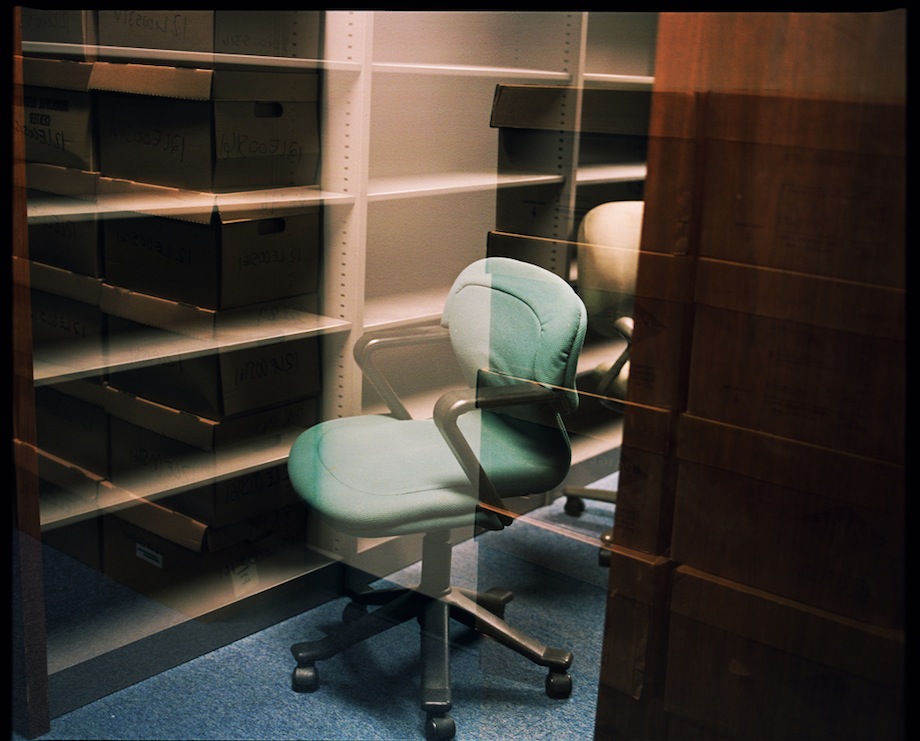 From Helen Levi’s Civil Servants photo series
From Helen Levi’s Civil Servants photo series
I always did pottery as a hobby. It was an after-school class and then I started teaching it as an assistant teacher and kept teaching in college. And then I got my first opportunity to sell and it was to Steven Alan.
I have noticed more similarities in the colors and textures in my photos. There’s this tree stump that I photograph every time I take a walk Upstate. I look at the ribbed texture of that stump and there’s so much ribbing in my planters. There must be a way my eye is seeing pictures and my eye is seeing clay and I can’t articulate it yet. I want to be able to keep doing both.
I think it’s a nice dialogue. I think there’s always conversation when someone is making images and sculptural tabletop objects. What are some of your new projects coming down the line? I love the little ceramic fruit.
Thank you. I associate my doing pottery with being a kid. I want to keep some of that childlike aspect. For example, I started making the gold eyes from a private class for two little girls in my apartment—just hand-building. See that mug there with the toothbrushes hanging out of it? I made that as a child. It’s a mug with a face stuck on. I wanted to do something kind of similar to that with them. They asked, “How do you make an eye?” I started making a whole bunch of eyes and then I had all these eyes sitting on the table so I made a little pinch pot and stuck them all around. And I liked it. I thought, how could I refine this? I threw the cup on the wheel and then I did the gold luster. It was a nice way to elevate this childlike exploration and it’s important for me to keep that alive in my work. The same with the fruity things. When I was a kid, my sister and I would have a doll house and make little fruits, foods, a carton of milk and a can of soda. And I still want to do that.
